|
Español - Soomaali - Hmoob
Minneapolis turtles are making their way to winter habitats, until the weather cools
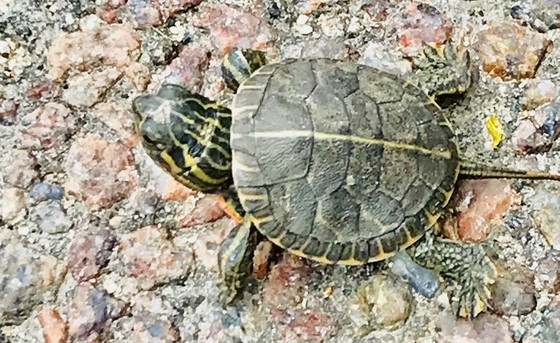 Turtle images courtesy of Carly Ettinger
Did you know baby turtles continue to hatch through fall? Some hatchlings will emerge from the nest to make their way to water for the winter - usually through October. Others will overwinter in the nest and emerge next spring.
Read on for autumn updates about baby turtles, their movements - and how you can help the Minneapolis Park and Recreation Board (MPRB) gather information on turtles in Minneapolis.
Efforts began last spring and include marking and protecting turtle nesting sites; sharing the bit.ly/ReportATurtle form so people can report where and when they see turtles on land; and installing signs where turtles are known to cross roads. Findings will guide future efforts to protect them at critical locations.
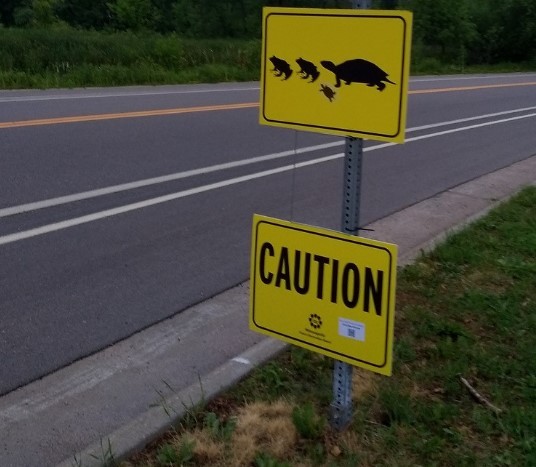
Hatchlings that emerge from nests
You may see these baby turtles during their journey to find water. Some may even still have the yolk sac from their egg attached to their underside.
It is critical for hatchlings to find water on their own, so that they imprint on the place and the process. This phenomenon is called natal homing or philopatry. Still, some turtles may need help to cross a road or path. See below for tips!
|
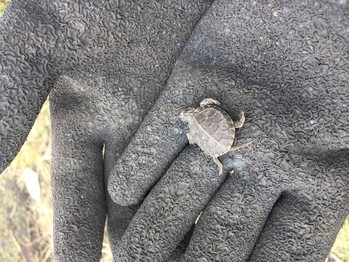
Hatchlings that stay put
Some turtles that hatch late in the season do not emerge from their nest until the following spring.
Hatchlings may remain in the nest if it is too cold for them to move or swim well, since their body temperatures are regulated by environmental temperatures.
It's possible for people to accidentally dig up these hatchlings during autumn gardening or landscaping. If this happens, simply return the turtles where you found them: same place, at the same depth.
|
Admire turtles – don't "adopt" them!
Taking home a hatchling or adult turtle is not adopting a pet. Turtles are wild animals who require a specific habitat.
Most turtles "rescued" from the wild suffer irreparable nutritional deficiencies. Equally important: Wild turtles are protected by the state, and you need a permit to have them.
Ways you can help turtles in Minneapolis
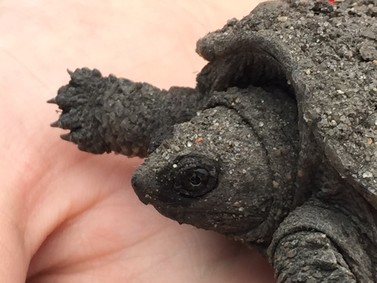
Report turtle sightings at bit.ly/ReportATurtle.
Keep an eye out on roads and paths near lakes and ponds – especially if you're driving or biking.
See an injured turtle? Report details at bit.ly/ReportATurtle and take the turtle directly to the Wildlife Rehabilitation Center of Minnesota.
Avoid handling healthy turtles, unless they need help crossing a road. Adult turtles are moving to their winter ponds know where they want to go.
If you do move a turtle across a road:
- Put it down facing same direction.
- Minimize handling to prevent damage to a turtle's yolk sac or a still-soft shell.
- See cartoon below for details!
Spread the word and share this email with Minneapolis residents.
|
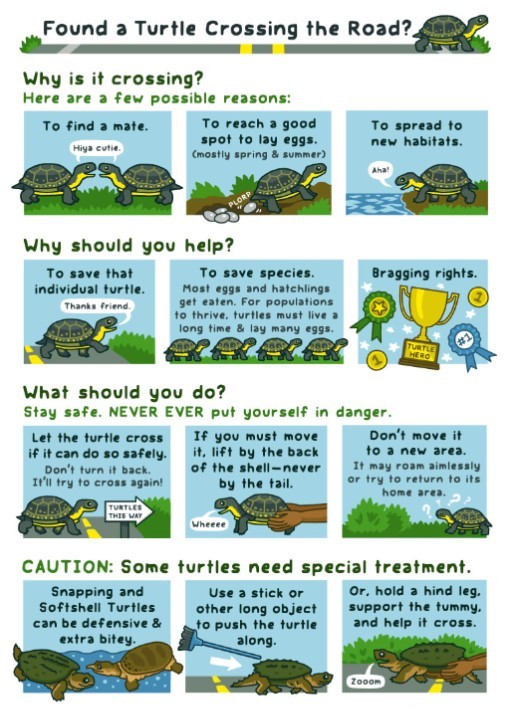 Cartoon courtesy of the Alongside Wildlife Foundation; art by BirdandMoon.com
Turtle images courtesy of Carly Ettinger
|